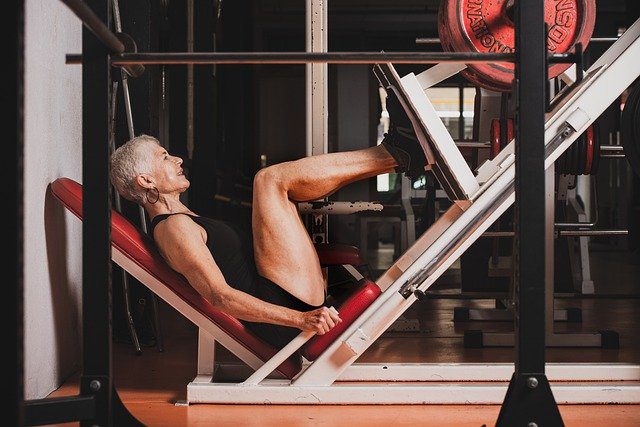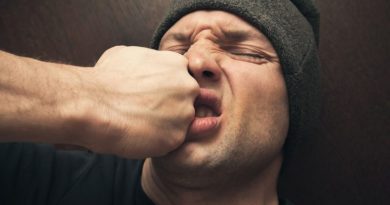Muscle Recovery After 50: Effective Ways to Feel Less Sore
Exercise is a great way to maintain lean muscle mass, manage weight, improve health and immunity, and help combat aging and Father Time. If you look at the market today, you see an endless number of supplements and technology geared toward the 18 to 35-year-old demographic. But what about muscle recovery after 50? Rest days and how you focus on muscle recovery after 50 are even more important as you age.
How quickly brands lose sight of their consumers once they reach a certain age. It’s almost as if this demographic is totally forgotten about.
Related Article: Sports Nutrition for Seniors: Is Anyone Paying Attention?
The truth is, as we age, many find their workout and muscle recovery gets worse. What would typically take 24-48 hours to recover following a workout now seems to stretch out to around a week in some instances. What can be done about this?
In this article, we will look at some of the most effective ways to feel less sore following workouts and how you can improve muscle recovery after 50.

Note: This article will discuss various methods outside of the normal stretching you should already be doing as well as getting a minimum of seven hours of quality sleep each night.
Table of contents
The Best Ways to Improve Muscle Recovery After 50
They say age is just a number — and they’re right. But there are times when our body reminds us of our age and that we aren’t living in the same body as we were in our 20s. What used to be five days in the gym has been cut back to two (or even one day) due to the intense soreness experienced following a workout.
There’s no denying it… workouts can take a pounding on us. We push our bodies to the limit each time we step into the gym. But sometimes, that soreness you feel for several days following a grueling workout is enough to make even the sanest individual question what the heck they’re doing.
Let’s dive into several effective ways to feel less sore and improve muscle recovery after 50 so that you can keep pushing yourself in the gym each week.
1. Red Light Therapy
First on our list of ways to feel less sore following workouts and improve muscle recovery after 50 is red light therapy. Sure, many people out there question how a “red light” can do much of anything, but users and researchers swear by their benefits.
Red light therapy has been found to be able to help you sleep better, improve recovery time following workouts, and even be able to heal banged-up joints. Different types of light can do various things. Red light, specifically, aids in stimulating cell regeneration. Add in near-infrared, and you have a tool that can penetrate deep into the body to support muscle recovery, reduce soreness, and minimize inflammation.
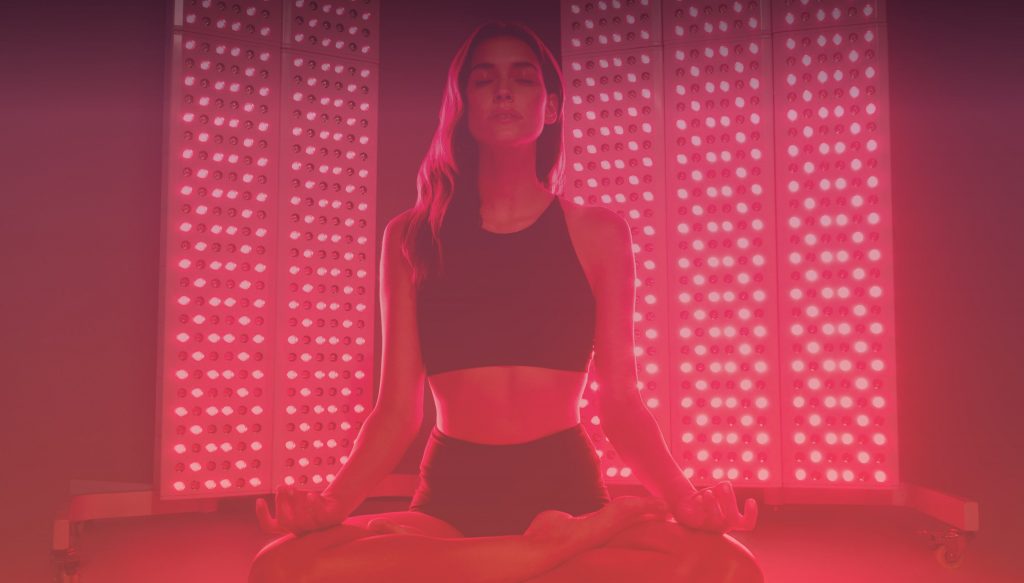
If you want to check out all the research to back up red light therapy, here’s a link to a bunch of studies.
Note: One brand that I, personally, use and trust is JOOVV. Here is the unit I have and love (and no, I don’t get paid a penny to say this).
Related Article: Does Red Light Therapy Such as the JOOVV Actually Work?
2. Contrast Water Therapy
One of the newest methods of improving muscle recovery after 50 is contrast water therapy. While some people still swear by ice baths to reduce muscle soreness, research has found that the combination of utilizing both hot and cold water submersion to be incredibly beneficial — especially post-workout.
If you want to experience less soreness following intense training sessions in the gym, reduce pain, and minimize inflammation, submerge yourself in very warm water and then immediately do the same into extremely cold water. Think of it as going from the hot tub into an ice bath and going back and forth.
3. Cryotherapy
While quite a few claims are being thrown around regarding cryotherapy, research surrounding this recovery technique is strong for its ability to help reduce inflammation and pain while also speeding up recovery.
Related Article: A Look into Cryotherapy Through the Eyes of Dr. Rand McClain
If you want to focus on muscle recovery after 50, look for a clinic around you that offers cryotherapy. While the procedure may not be the most comfortable (you’re basically standing naked in a machine that exposes you to an extremely cold temperature for several minutes), it has been shown to be incredibly effective.
4. Sauna
Something most people pass by in the gym without giving it a second thought is the sauna. Sure, it may be a haven for older men to gather and congregate to solve the world’s problems, but you may not have known that the sauna is the perfect tool to utilize if you’re looking to enhance muscle recovery after 50.
Related Article: Sauna Suits — Should You Use Them?
On top of being great for muscle recovery and reducing muscle soreness, using the sauna can increase growth hormone. This can be beneficial to those getting up in age as natural testosterone levels are on a steady decline. By boosting growth hormone, you have the potential to not only be able to maintain your lean muscle but also build more lean muscle tissue.
Jumping in the sauna as part of your recovery protocol can also help improve insulin sensitivity. Are you looking to perform better during your workouts? Saunas can enhance aerobic capacity and endurance.
Need a little cognitive boost? Hop in the sauna! Studies have found that using the sauna can boost cognitive function.
5. Massage Gun
If you’re lucky enough to go to a gym that has massage guns, be sure to utilize them as part of your pre- and post-workout protocols. Using them pre-workout helps prepare the muscles for the workload they are about to be put through while using them post-workout can help with recovery.
Related Article: 6 Ways to Effectively Speed Up and Improve Muscle Recovery
Muscle recovery after 50 means that you should utilize every trick you can pull out of your hat — using a massage gun is no different. Now, a massage gun is really just a device that utilizes percussion (vibrations) to work on a certain muscle or area of the body. The goal is to release any muscle tension and soreness while also improving blood flow and reducing inflammation.
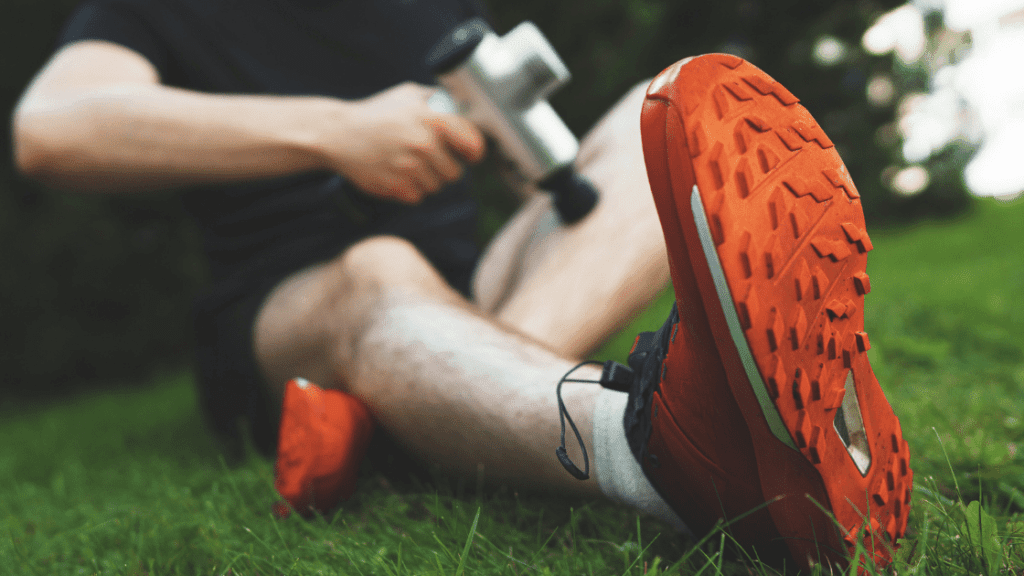
Overall, the research is really impressive in terms of how a massage gun can help improve muscle recovery and reduce DOMS (delayed-onset muscle soreness).
If you don’t have access to a massage gun at your gym, you can purchase one online as they are priced fairly reasonably. TheraGun is a really good brand if you have the money lying around, otherwise, there are several other options of massage guns that are less expensive.
6. Foam Rolling
Many gyms have foam rollers. They are usually found around stretching areas or even where people do core/ab work. If you want a foam roller for your home, they are incredibly affordable as you can find them on Amazon for around $20 or less (like the Amazon Basics Foam Roller).
Foam rolling is a fantastic myofascial release and can effectively reduce muscle soreness and tension. The research on foam rolling benefits can be found throughout the internet as well. One such study found that foam rolling helped improve recovery, helped maintain physical performance, reduced DOMS, and minimized muscle soreness.
If muscle recovery after 50 is something you’re after, it’s hard to pass up utilizing a foam roller.
7. Compression Apparel
If you’re 50+, you may be looking at some of the kids today and wondering why they are wearing “tights” under their shorts. It seems kind of weird, right? Well, little do they know (actually, they probably don’t know at all, and they’re just following a trend), but compression apparel is great for muscle recovery and keeping the muscles warm.
Let’s use an example to illustrate. Leg day is brutal for anyone. But if you’re looking for muscle recovery after 50 and leg day is something that nearly cripples you, compression leggings may be precisely the thing to wear during your workout and after to help reduce muscle soreness and speed up recovery.
Unsure about wearing “leggings?” One study found that the use of compression apparel was able to speed up muscle recovery.
8. Supplements
Last on our list of ways to feel less sore and improve muscle recovery after 50 is supplements.
With so many different supplements to choose from, we compiled a list below to showcase some effective supplements that you may want to consider adding to your regimen to help improve recovery. Some of the supplements you can pick and choose from include:
- BCAAs (branched-chain amino acids)
- EAAs (essential amino acids)
- Glutamine
- Protein Powder
- AlphaSize
- PhosphatidylSerine (PS) 50%
- Creatine
- Citrulline Malate
- CBD
- Sea Moss
- Bromelain
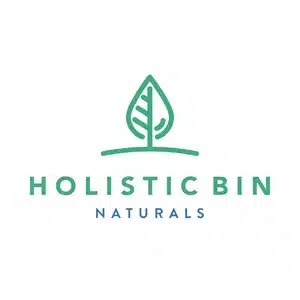
Implement any of these methods above to help improve muscle recovery after 50 and feel less sore following workouts. That being said, while I wrote this article and compiled the research to validate what was said above, I want to give a special thanks to Holistic Bin for sponsoring this article. Because of fantastic partnerships with brands like Holistic Bin, I’m able to provide you with helpful and educational content. If you want to help support the brands that support me, head over to Holistic Bin and check out some of the amazing holistic and natural products they have to offer.


*Disclosure: This article may contain affiliate links or ads, which means we earn a small commission at no extra cost to you if you make a purchase through these links. These commissions help support the operation and maintenance of our website, allowing us to continue producing free valuable content. Your support is genuinely appreciated, whether you choose to use our links or not. Thank you for being a part of our community and enjoying our content.
PLEASE CONSIDER SHARING THIS ON YOUR SOCIAL MEDIA TO HELP OTHERS LEARN MORE ABOUT THIS TOPIC.


